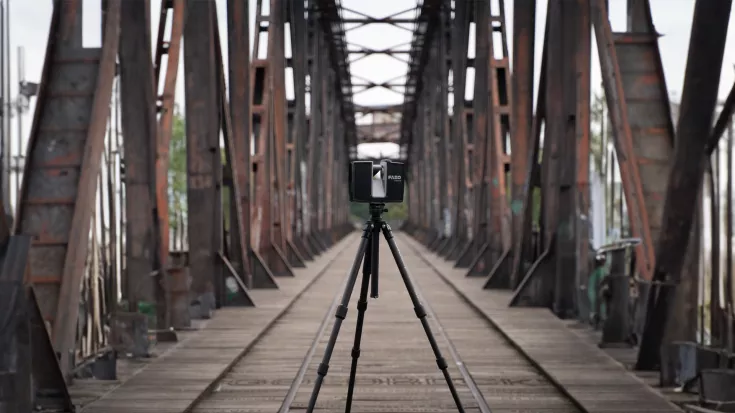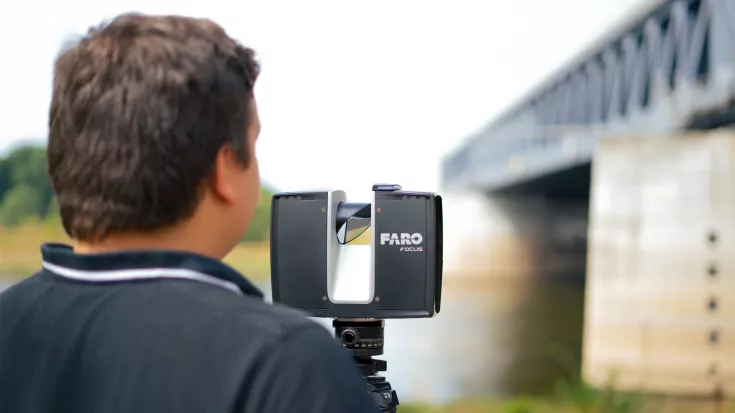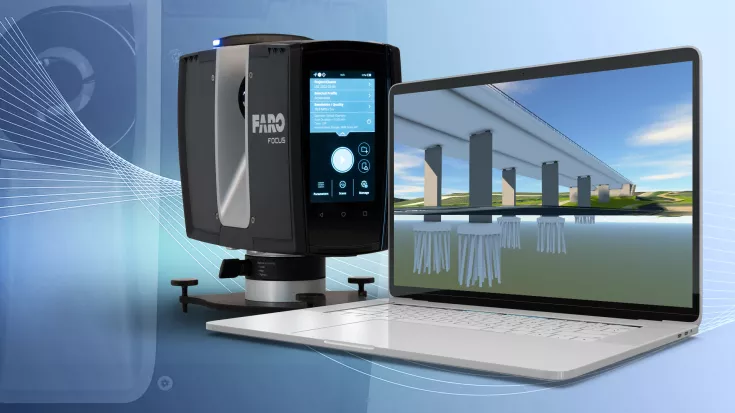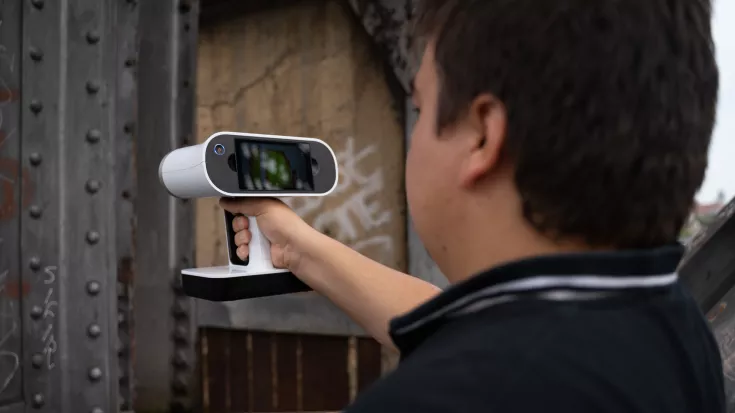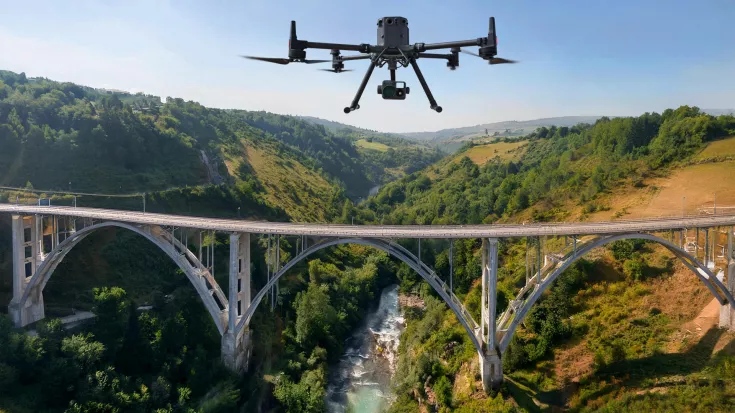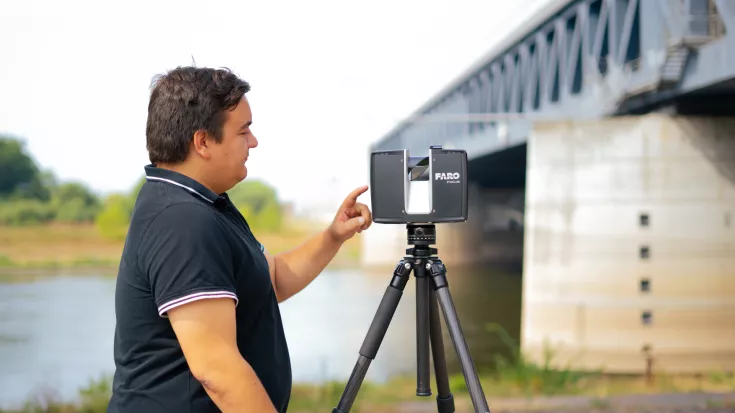3D Scanning & Modeling in Bridge Construction
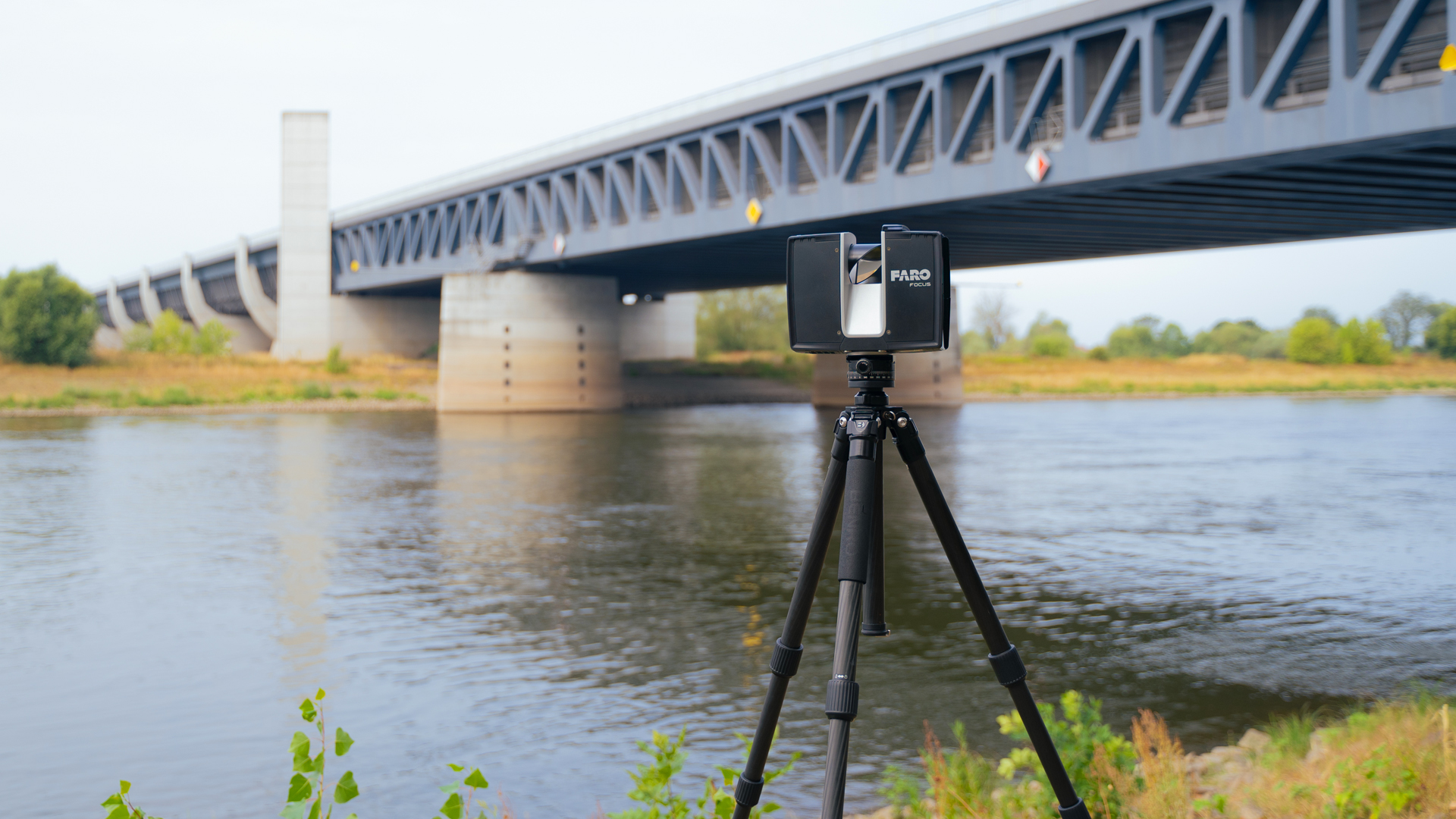
TitleThe importance of 3D scanning of bridges
Nowadays, the use of 3D scanning technologies is a very important part of the surveying and maintenance of bridges. The regular and precise measurement of bridges is essential, as bridges are a critical infrastructure element. High loads due to traffic, environmental conditions and material fatigue can lead to damage, such as cracks or corrosion. It is therefore important to continuously monitor their condition in order to detect damage at an early stage and ensure safety.
TitleUse of laser scanners
Terrestrial laser scanners (TLS) are one of the most commonly used technologies for surveying bridges. They are used for various applications in bridge construction:
- Planning new bridges: Create detailed 3D models of the subsoil and surroundings to avoid planning errors and shorten project duration.
- As-built survey and reconstruction: Use laser scanning to document existing bridges and plan targeted reconstruction measures.
- Safety monitoring: Continuous monitoring allows potential risks such as cracks or deformations to be identified at an early stage – before they become a danger.
TitleAdvantages of 3D scanning technologies
Higher precision of survey data
3D scans provide millions of measuring points (point clouds), which enable an exact representation of the bridge geometry.
Time saving
Large areas and complex geometries can be captured in a short time, which minimizes the duration of the survey and possible traffic obstructions.
Reduced human error
The use of laser scanners reduces the human influence on measurement accuracy.
Safety benefits
Surveying from a safe distance reduces the risk to the surveyor, especially in areas that are difficult to access or dangerous.
Deformation-accurate surveying
Identify changes in the statics or structure through precise monitoring and thus ensure long-term stability.
Realistic visualization
3D models and 360° images enable a clear representation of the bridge, covering everything from technical details to the overall view.
Optimization of maintenance & inspection
Regular scans provide reliable information about the condition of the bridge and make it easier to plan maintenance measures.
TitleSurveying bridges with terrestrial laser scanners
Surveying a bridge often requires the use of multiple locations to ensure complete coverage. The resulting point clouds from the various scans are then merged via registration to create a complete 3D model of the bridge.
The detailed point clouds provided by terrestrial laser scanners enable:
- Accurate geometric images of the bridge structure, including load-bearing elements, piers, girders and the deck surface.
- Capture hard-to-reach areas such as bridge undersides or hollow structures without direct access.
- As-built and condition assessment for monitoring wear, fatigue or corrosion.
TitleAdvantages compared to traditional methods
- Completeness of data capture: A terrestrial laser scanner captures the entire structure with high density, while traditional methods only capture individual points or lines.
- Minimal disruption to ongoing operations: The survey can be carried out without severely disrupting traffic or causing long closures.
- Long-term monitoring and comparability: The point clouds allow scans from different years to be overlaid, which enables changes to be monitored accurately.
TitleBridge maintenance & repair with 3D scanning
The condition of bridges is checked regularly in order to assess damage and initiate maintenance measures in good time. Bridge maintenance is not only crucial for safety, but also for extending the service life of the structures.
With the help of 3D scans, even the smallest deformations or damage that are difficult to see with the naked eye can be identified. Cracks, corrosion or flaking in concrete can often be better detected in the point clouds, as they provide a detailed image of the surface structure.
In one of our YouTube episodes, we demonstrate how a terrestrial laser scanner uses 3D scanning to provide a precise inventory of a damaged bridge, making a significant contribution to the planning and implementation of renovation work to restore the bridge to its original condition.
TitleCondition monitoring
An important aspect of bridge maintenance is the monitoring of load-bearing capacity and structural integrity. Regular 3D scans can be used to document changes in the structure over time. For example, settlements, inclinations or deformations of the structure can be precisely analyzed over a period of years. This enables a precise condition assessment and the planning of maintenance measures before major damage occurs.
Smaller bridges and bridge sections can also be monitored using mobile laser scanners such as the FARO Orbis and handheld scanners such as the Artec Leo. These scans also provide dense point clouds that document the smallest changes such as cracks or deformations and thus enable early maintenance measures. This improves the long-term monitoring of bridge safety and integrity.
TitleDigitalization of bridge damage
In this video, we show the detailed 3D scan of the collapsed Carola Bridge in Dresden, created with the Teledyne Optech Polaris long-range scanner.
The use of the Polaris scanner has enabled us to create precise images of the collapsed bridge that can be used for further analysis and reconstruction.
TitleUse of UAV - Capturing bridges from the air
UAVs equipped with LiDAR sensors or high-resolution cameras can scan bridges from above and below without the need for scaffolding or traffic closures.
This technology allows precise detection of the entire bridge structure, including load-bearing elements, without direct contact.
UAV-based mobile scanners provide detailed 3D point clouds that are used for condition monitoring, damage detection and digital twins. They significantly speed up the surveying process while providing a safe and cost-effective solution for bridge maintenance and monitoring.
TitleCreation of digital twins
Digital twins of bridges can be created through the use of 3D scans. These digital models are exact replicas of the real structures and serve as the basis for simulations, structural analyses and maintenance planning.
A digital twin enables engineers to test various scenarios, such as the behavior of the bridge under load, without having to carry out physical tests.
The Veesus Arena 4D and TopoDOT software solutions are particularly suitable for construction and as-built documentation and the creation of digital twins of bridges.
TitleUpcoming developments
The use of terrestrial laser scanners in the surveying of bridges offers immense advantages over traditional methods. Precision, efficiency and the ability to create detailed 3D models contribute significantly to the maintenance and monitoring of bridges.
Despite some challenges, particularly in terms of data processing and costs, 3D scanning represents a forward-looking approach to surveying and maintaining infrastructure.
